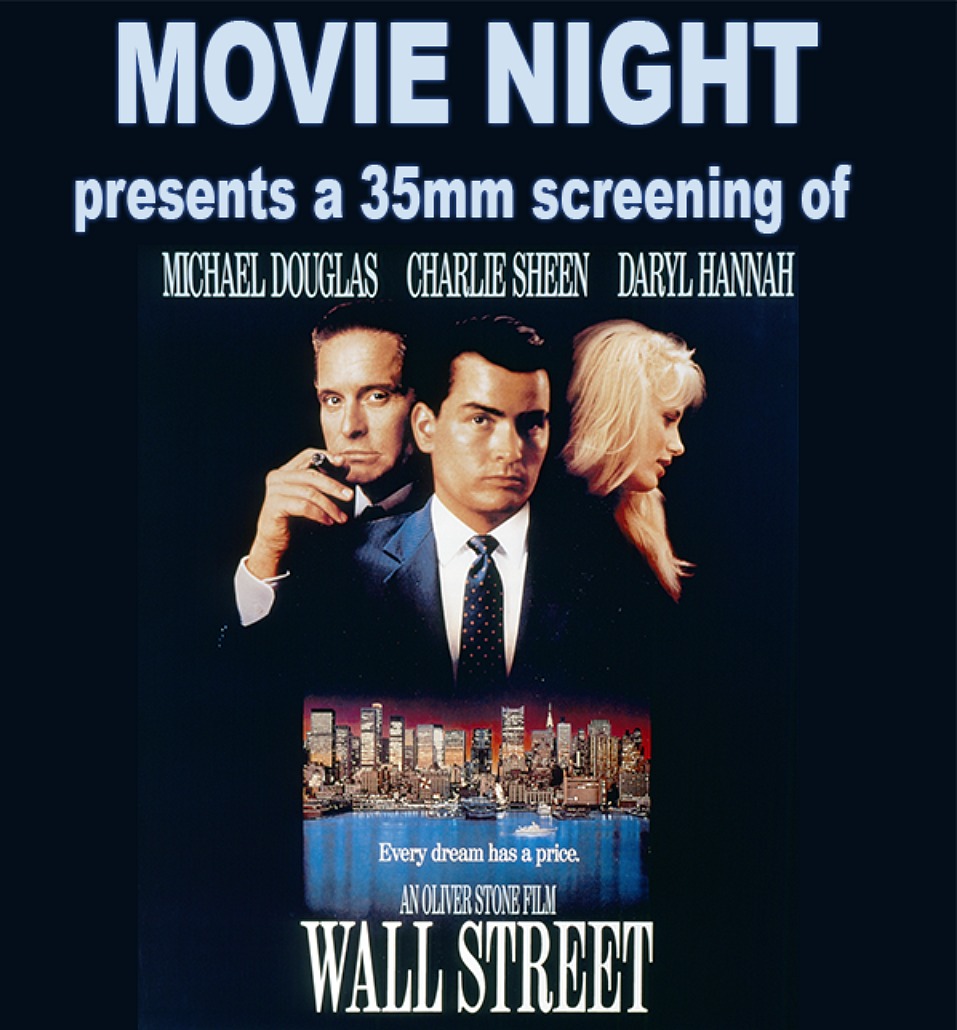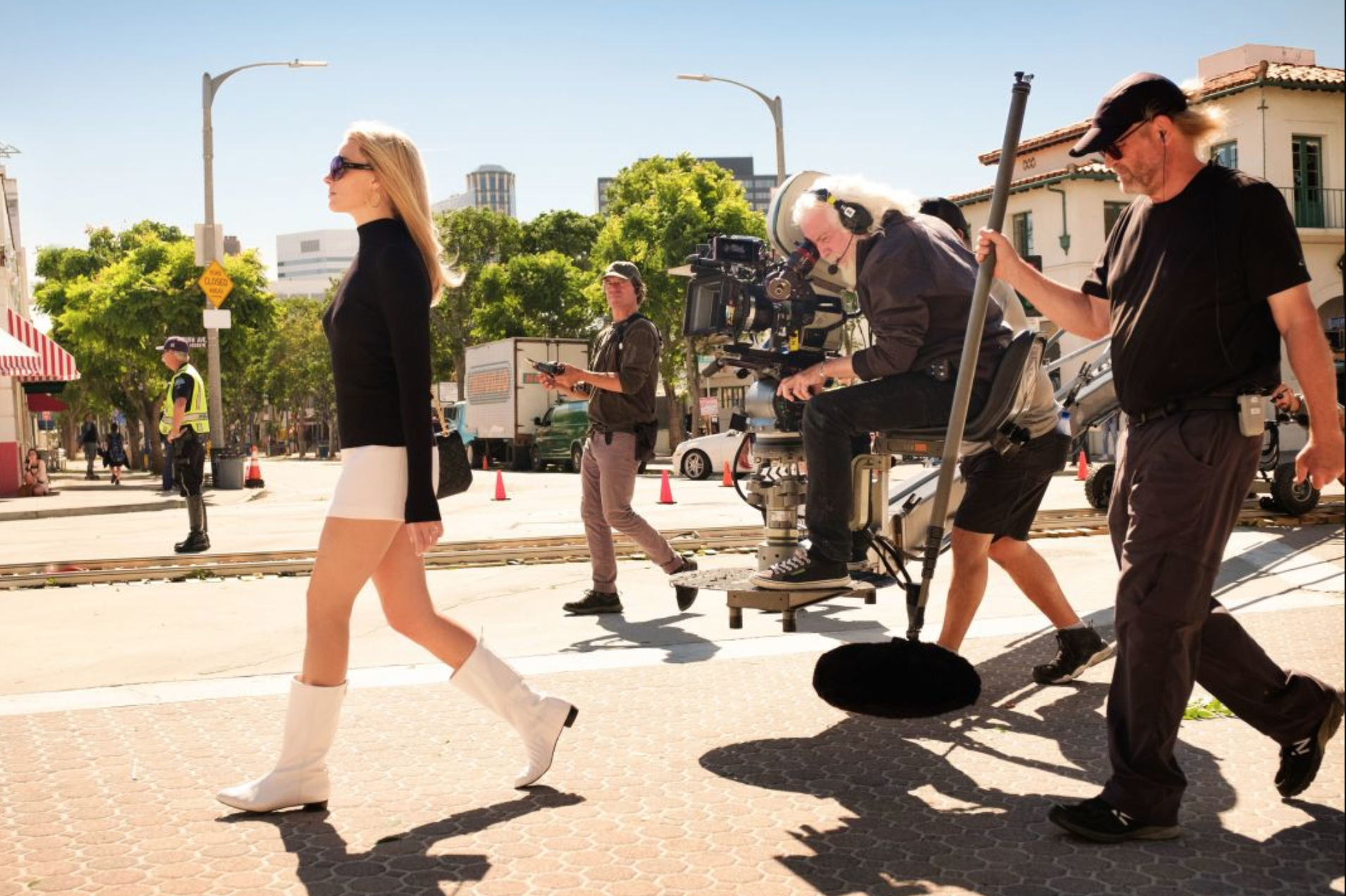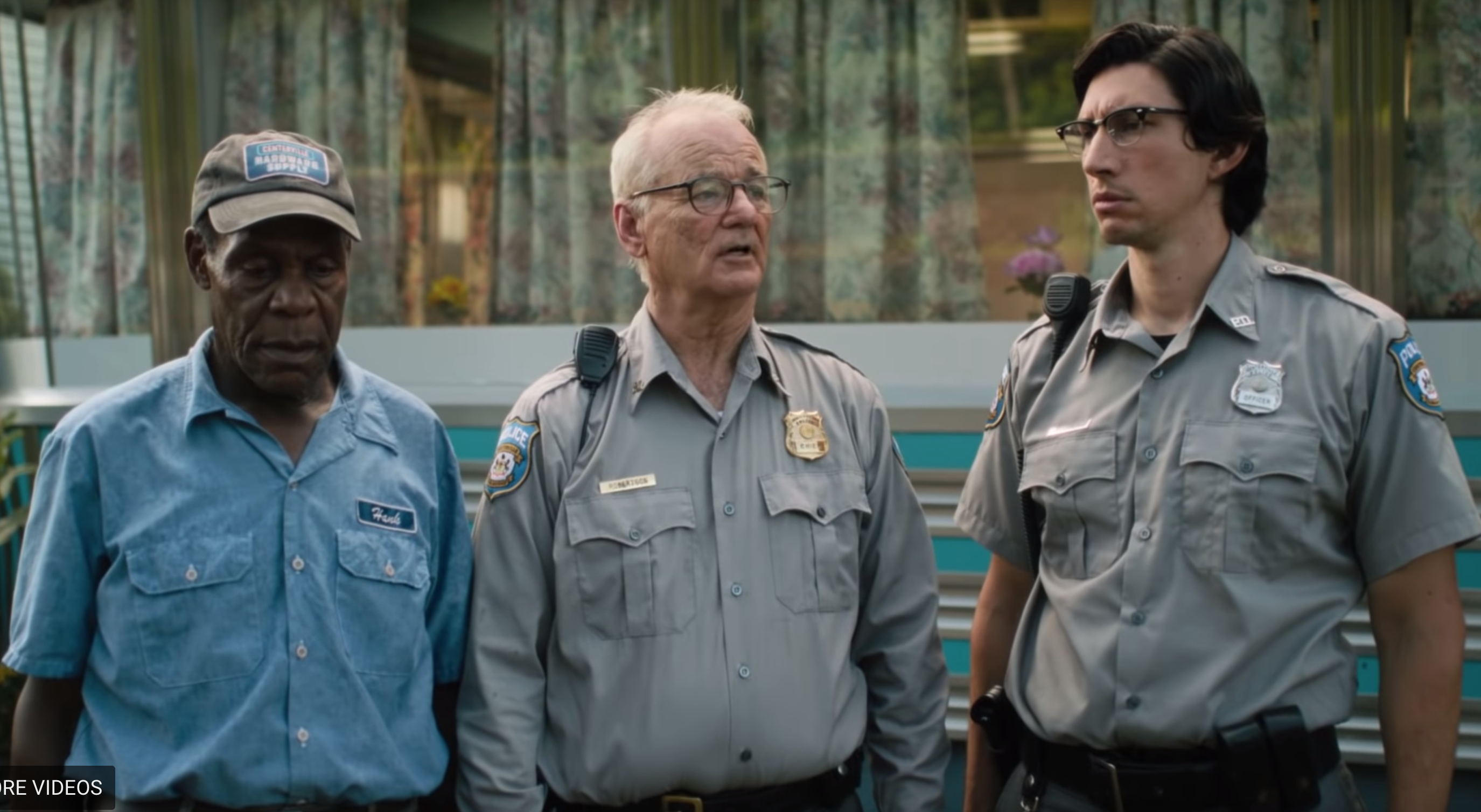Daily
HE’s Top Forty ’90s Films
Jordan Ruimy sent a Wayback Machine capture of several best of the ’90s lists from top-tier critics. This inspired me to come up with my own ’90s rundown, but I really can’t confine an entire decade (especially the ’90s) to ten films. Well, I can and did, but I feel better about listing my top 40. Which were selected not just on the basis of alleged greatness and sublime craft and whatnot, but because they’re closest to my heart.
1. Fargo (d: Coen brothers)
2. GoodFellas (d: Martin Scorsese)
3. Pulp Fiction (d: Quentin Tarantino)
4. Unforgiven (d: Clint Eastwood)
5. L.A. Confidential (d: Curtis Hanson)
6. Schindler’s List (d: Steven Spielberg)
7. The Silence Of The Lambs (d: Jonathan Demme)
8. Groundhog Day (d: Harold Ramis)
9. Heat (d: Michael Mann)
10. Saving Private Ryan (d: Steven Spielberg)
11. The Insider (d: Michael Mann)
12. Go (d: Doug Liman)
13. Flirting With Disaster (d: David O. Russell)
14. Rushmore (d: Wes Anderson)
15. Fight Club (d: David Fincher)
16. The Player (d: Robert Altman)
17. Reservoir Dogs (d: Quentin Tarantino)
18. JFK (d: Oliver Stone)
19. Mad Dog & Glory (d: John McNaughton)
20. The Usual Suspects (d: Bryan Singer)
Mutilator of Small Dragons
We all know that cats bring home captured prey as tribute to their human family. Over the last week Anya, who just turned two, has been delivering live geckos, one after another. At least five if not six. In each instance she’s bitten their tails off before bringing them home. And then, as cats tend to do, she plays with them to death. Well, not really because after congratulating Anya for being a good hunter and telling her how much I respect her prowess, I grab the gecko, take it outside and throw it over the fence. And then Anya will bring home another tail-less victim. Rinse, wash, repeat.

Dutch vs. “Roman Holiday” Girl
Compare these color portraits of Audrey Hepburn — the first taken sometime in the mid ’40s in Holland, when Hepburn was in her mid teens, and the second during the making of William Wyler‘s Roman Holiday (’53), or sometime in ’52 when Hepburn was 23. Seven or eight years, the right kind of hair length and style, and especially the right kind of makeup and photographic lighting can make for a world of difference.
If you didn’t know Hepburn or her films, the Holland shot wouldn’t necessarily scream “glamorous Hollywood movie star to be.” It’s a portrait of a plain, pleasant-looking teenager but no drop-dead beauty queen in the making.
Robert Matzen‘s “Dutch Girl: Audrey Hepburn and World War II” pops on 4.15.

15 or 16-year-old Audrey Hepburn in Holland.
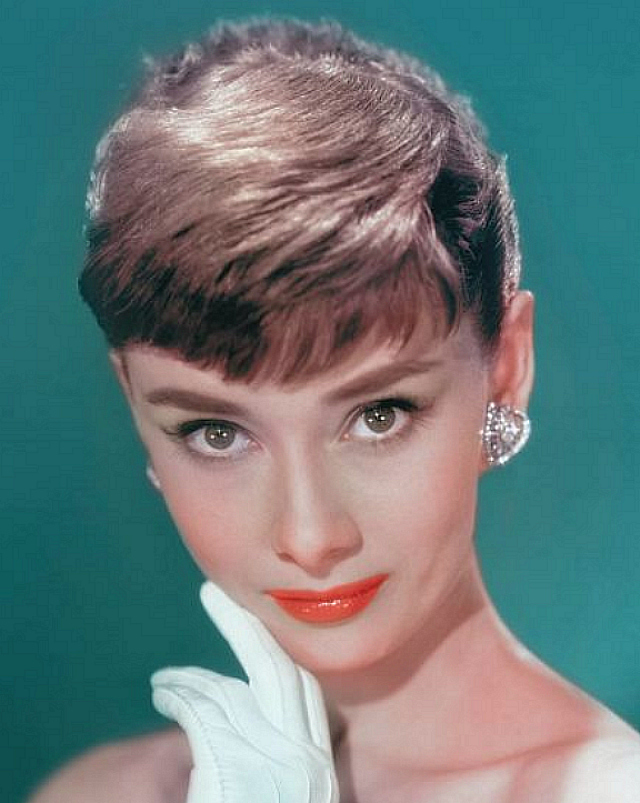
23 year-old Hepburn during making of Roman Holiday.
“A Rainy Day” in Mexico?
In “The Truth About Woody Allen (Part II)“, which was posted on 4.8.19, author Robert Weide mentions the theatrical fate of A Rainy Day in New York, which Amazon has refused to distribute and which Allen has sued them over. However long it takes for the long-delayed film to surface stateside, Weide indicates it may see the light of a projector beam later this year in Mexico.
Key excerpt: “One thing I know for sure [is that] the Farrows may succeed in throwing some road blocks in Woody’s way, but they can’t stop him. A Rainy Day in New York is already due to come out in theaters overseas, and will eventually be released in the states — even if not by Amazon.”
Weide’s link is to a January ’19 article in Medio, which mentions that the Mexico-based Latam Pictures will release it sometime later this year.
If and when A Rainy Day in New York were to open in Tijuana before debuting stateside in any format, I would happily drive down to see it.
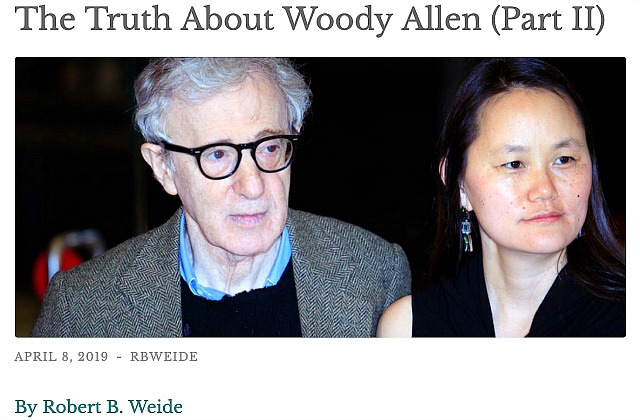
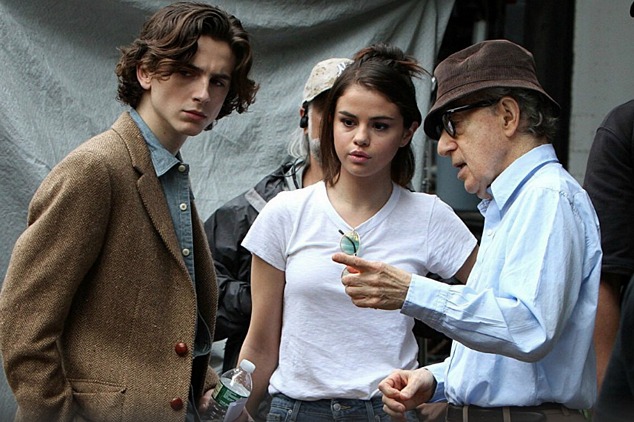
Significant But Faintly Disappointing
For the first time in recorded history, an actual, real-deal photo of a black hole — calling Chris Nolan and Robert Forster! — was circulated today.
N.Y. Times excerpt: “The image, a lopsided ring of light surrounding a dark circle deep in the heart of the galaxy known as Messier 87, some 55 million light-years away from Earth, resembles the Eye of Sauron, a reminder yet again of the power and malevolence of nature. It is a smoke ring framing a one-way portal to eternity.
“To capture the image, astronomers reached across intergalactic space to Messier 87, a giant galaxy in the constellation Virgo. There, a black hole several billion times more massive than the sun is unleashing a violent jet of energy some 5,000 light-years into space.”
The image isn’t as disappointing as Jupiter, but it’s a little too vague and indistinct — it’s just not what we want to see when we’re looking at “an actual photo of a black hole.”

Historic but nonetheless underwhelming photo of an actual black hole.
13 months ago director-screenwriter Emily Carmichael spoke with Coming Soon‘s Max Evry about her screenplay for Disney’s on-and-off-but-more-recently-on Black Hole remake.
Evry: You’re writing Disney’s reboot of The Black Hole, which is very exciting. I’m actually a big fan of that film, warts and all.
Carmichael: Fuck yeah!
Evry: I think that movie is fascinating because it’s a movie of two eras. It was originally developed post-2001: A Space Odyssey as more of a serious science fiction film and then when Star Wars came out they were like, ‘Oh, we gotta Star Wars this up!” It has foot in old school sci-fi and the effects extravaganzas that followed Star Wars.
If Quentin Doesn’t Screen “Hollywood” In Cannes…
Posted last night by Showbiz411‘s Roger Friedman: “We all want it, believe me. Everybody wants it. But the reality, I am told, is that Quentin Tarantino’s Once Upon a Time in Hollywood is not a lock for the Cannes Film Festival next month. Sony is set to release the potential blockbuster on July 26, but [nine] days from the big announcement of Cannes movies, the word is that the film may be ‘OUT’ for the time being.”
The rumor is that Tarantino is scrambling to finish the editing in time, but, Friedman writes, “it may take longer than April 18th” — Cannes announcement day — “or even May 21st, when it’s supposed to show at Cannes on the 25th anniversary of Pulp Fiction at Cannes.”
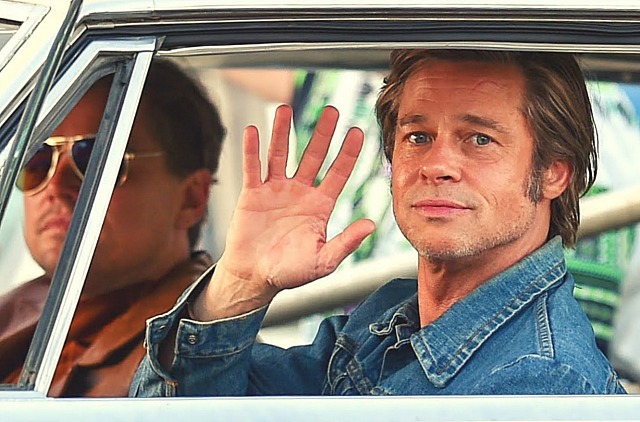
Leonardo DiCaprio’s “Rick Dalton” and Brad Pitt’s “Cliff Booth”, largely based upon Burt Reynolds and stuntman buddy Hal Needham, at a time when TV actor Reynolds was struggling to get into A-level features but without much success.
HE’s take on this? “Not finished in time for Cannes” = Sony management is afraid that Once Upon A Time in Hollywood may get buckshot by Cannes critics and has concluded it’s safer to just open it in July on the strength of the DiCaprio-Pitt-Robbie casting and the 1969 old-Hollywood-nostalgia marketing campaign.
Keep in mind that the main character — Leonardo DiCaprio‘s “Rick Dalton”, a TV actor trying but failing to break into features — is largely based upon Burt Reynolds, who was also trying in ’69 to maneuver his way into grade-A features but who didn’t get there until his starring role in John Boorman‘s Deliverance (’72). Brad Pitt‘s “Cliff Booth”, Rick’s longtime stunt double, is of course based upon Reynold’s good stuntman buddy Hal Needham, who went to directing redneck car-chase movies and who was ironically instrumental in destroying Reynolds’ career in the early ’80s.
Grateful Zombies on Cote d’Azur
From Cannes press office: On Tuesday, 5.14, Jim Jarmusch‘s The Dead Don’t Die will be screened at the opening of the 2019 Cannes Film Festival (5.14 to 5.25), and in competition — a world premiere. HE passed along a rumor about Jarmsuch’s film going to Cannes ten days ago.
It certainly matters to me if Iggy Pop is playing a zombie, but will it matter to average low-rent horror fans (i.e., the less-than-discerning types who loved It)? You have to ask this stuff.
Tell me how this official synopsis differs from George Romero‘s Night of the Living Dead (’68), except for the name of the town: “In the sleepy small town of Centerville, something is not quite right. The moon hangs large and low in the sky, the hours of daylight are becoming unpredictable and animals are beginning to exhibit unusual behaviors. No one quite knows why. News reports are scary and scientists are concerned. But no one foresees the strangest and most dangerous repercussion that will soon plague Centerville: The Dead Don’t Die — they rise from their graves and savagely attack and feast on the living — and the citizens of the town must battle for their survival.”
When Romero made his groundbreaking indie zombie film in 1968, there was an actual metaphor in play. An idea about debased or corroded human behavior somehow causing a rupture in the natural life-death cycle. Now the zombie thing is just another brand — a horror concept that became a movie and TV genre. Jarmusch being Jarmusch, I’m presuming that some kind of attempt has been made to refresh the metaphor.
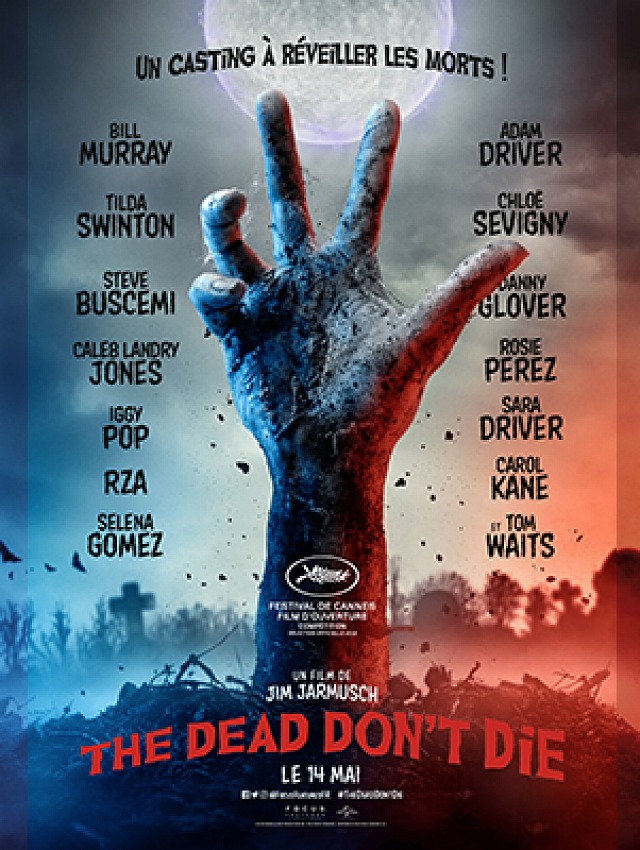
By Any Other Name
I’m sorry but spelling and pronouncing the name of Thailand director Apichatpong Weerasethakul (Uncle Boonmee Who Can Recall His Past Lives, Mekong Hotel, Cemetery of Splendor) has always been a problem for me. Guy Lodge types won’t admit this but it’s true for most of us (or at least those of us who are honest). His Wiki bio says that “cinephiles affectionately refer to him as ‘Joe’ Weerasethakul — a nickname that he, like many with similarly long Thai names, has adopted out of convenience.” The last name, of course, is much more difficult to handle than the first. In my mind he’s always been Apichatpong J. Weisenheimer.
Verdict Around The Corner
World of Reel‘s Jordan Ruimy has been polling critics for their favorite films of the twenty-teens. So far he’s heard back from 134 critics, but is looking to poll 200 or better before posting the results next week. This morning I sent him my nine–year rundown [after the jump] and asked how many of my picks have landed near the top of Ruimy’s best-of-the-decade list.
Ruimy’s response: “There are two films on your best-of-the-teens list that are currently in the top 10: The Social Network and A Separation. Two more of your favorites, Manchester By the Sea and Call Me By Your Name, are in the top 20. The Wolf of Wall Street is slowly climbing up. Moonlight is among the top ten, and Get Out isn’t far behind.
HE opinion: Moonlight is a good film, but was over-showered with praise by way of virtue-signalling and p.c. kowtowing. Now that the post-Twilight Zone truth about Jordan Peele has begun to settle in (i.e., that he got lucky by way of overpraise from guys like L.A. Daily News critic Bob Strauss), Get Out‘s rep is almost certainly undergoing a reassessment.
Back to Ruimy: “Out of the 134 critics that have submitted their lists thus far NONE have mentioned Zero Dark Thirty, Leviathan or The Square. Only three lists have Son of Saul, including my own. Surprisingly Moneyball is getting some decent love — it’s on five lists.
“Apparently not enough people have seen Diane.”
I’ll Tell You What It Means
When people clap at the end of an industry screening, it usually indicates (a) politeness and (b) support of filmmakers whom some in the audience would like to meet and perhaps even work with some day. When people clap at a regular ticket-buyer screening, it means the film is a hit — period. They clapped at the end of Platoon, The Silence of the Lambs, Goodfellas, Titanic, The Wolf of Wall Street, etc.
What goes through my mind when this happens? I say to myself “this is what I love about seeing a film in a theatre…I love this kind of clear and immediate sense of how a film has played with a cross-section…you obviously can’t get this at home….I also love it when people laugh at a film by hooting and talking back to the screen, like when I saw Irwin Allen‘s The Swarm at the Quad back in ’78.”

Stone’s Six-Year Hot Streak
Director-screenwriter Oliver Stone, currently the Noam Chomsky of Hollywood filmmakers, is still fully engaged, plugging away and firing on all cylinders. He’ll probably remain that way until the day he drops dead. But from ’86 through ’91 Stone was incandescent and untouchable — Salvador (’86), Platoon (’87), Wall Street (’87), Talk Radio (’88), Born on the Fourth of July (’89), The Doors (’91), JFK (’91). You could extend the streak, I suppose, to Natural Born Killers (’94), even though Heaven and Earth (’93) was a problem. Any Given Sunday (’99) was of course a major rebound. Okay, call it a 13-year streak.
